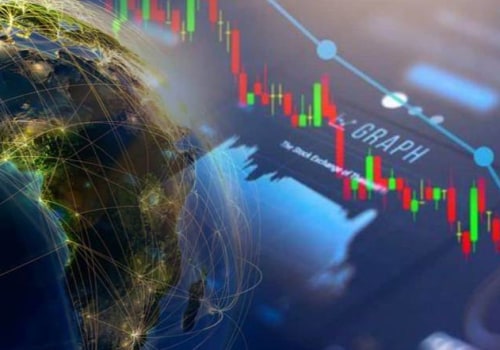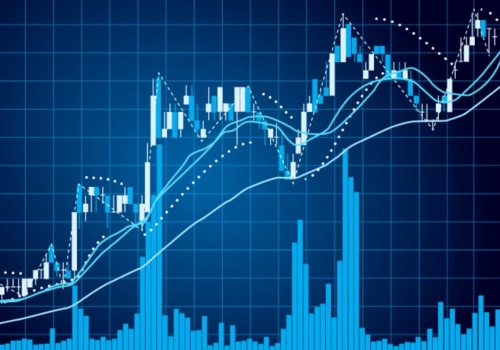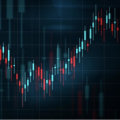Are you an aspiring Forex trader looking for the right tools to help you succeed? One of the most important tools you need is an economic calendar. An economic calendar is a tool that provides traders with an overview of important economic events that could affect the markets. It can help traders understand when certain market movements are likely to occur, and how they should adjust their strategies accordingly. In this article, we'll explore what an economic calendar is, how it can be used by Forex traders, and why it is essential to trading success. An economic calendar is a tool used by forex traders to keep track of important economic data releases and events that may affect their trading.
This type of calendar provides a timeline of scheduled economic indicators, such as central bank interest rate decisions, GDP growth figures, and unemployment data. By understanding when these indicators are released, traders can make informed decisions about their trading strategies. The calendar typically contains information on the expected release dates and times of key economic news, along with an estimated value for the indicator in question. This information allows traders to plan their trades accordingly, while also giving them an idea of what to expect from the markets following the announcement.
In order to use an economic calendar effectively, traders must understand how to read and interpret the data. For instance, a central bank rate decision may be listed as “expected” or “actual”. The expected rate is what most analysts believe the central bank will announce, while the actual rate is what the central bank actually announces. Traders also need to understand the different types of events reflected in an economic calendar. Generally speaking, these events include announcements related to government policy decisions, economic data releases, and market-moving news.
Government policy decisions can include changes to interest rates, quantitative easing measures, and fiscal policies. Economic data releases can cover a wide range of topics, such as GDP growth, unemployment figures, and inflation rates. Market-moving news often includes major political or economic events that could affect the markets. Using an economic calendar to your advantage requires a few key strategies. First, traders should pay close attention to the scheduled release dates and times of key economic news so they can plan their trades accordingly.
Additionally, traders should use risk management strategies when trading with economic data releases, such as setting stop losses or using hedging strategies. Finally, it’s important for traders to consider any potential correlations between different markets when making trading decisions. Traders should also remember that the information found in an economic calendar is only an estimate and not a guarantee of future price movements. The actual results of the data release may differ from what was originally expected. Therefore, traders should use risk management strategies when trading with economic data releases in order to limit their losses. In conclusion, an economic calendar is a valuable tool for forex traders.
It provides a timeline of upcoming economic news and events that could potentially affect their trading strategies. By understanding how to read and interpret an economic calendar, traders can make more informed decisions about their trades. Additionally, by using risk management strategies when trading with economic data releases, traders can limit their losses and maximize their profits.
Final Thoughts on Trading with an Economic Calendar
In conclusion, an economic calendar is a useful tool for forex traders that helps them stay informed of upcoming economic news releases and events. By monitoring the economic calendar, traders can develop informed strategies and make decisions based on the latest information.An economic calendar is especially beneficial for short-term traders, who need to act quickly to take advantage of market volatility. Traders should be aware that the information provided in an economic calendar is often preliminary and subject to change. As such, they should be prepared to adjust their strategies if necessary. Additionally, traders should consider other sources of information when making decisions, such as technical analysis and news reports. Overall, an economic calendar can be a powerful tool for forex traders. By using the data provided in an economic calendar, traders can gain insight into market trends and develop strategies to capitalize on them.
What is an Economic Calendar?
An economic calendar is an essential tool for forex traders, providing them with a timeline of scheduled economic indicators, such as central bank interest rate decisions, GDP growth figures, and unemployment data.Economic calendars help traders stay informed and make informed decisions about their trading strategies. The economic calendar provides a list of upcoming and past economic events and indicators, and a description of the type of information included in the event. For example, a central bank interest rate decision may be listed as “Central Bank Announcement: Interest Rate Decision” and will include details about the new interest rate. Similarly, a GDP growth figure may be listed as “GDP Growth: Q1 2020”, providing traders with the latest GDP growth figure for the first quarter of 2020. In addition to the type of information included in the event, the economic calendar also shows the expected impact of the data on currency markets.
For example, a central bank interest rate decision may be listed as “Highly Impactful”, indicating that it is likely to have a significant impact on currency markets. Similarly, a GDP growth figure may be listed as “Moderately Impactful”, indicating that it is likely to have a moderate impact on currency markets. By understanding the type of information featured in an economic calendar and its expected impact on currency markets, forex traders can make informed decisions about their trading strategies.
How to Read an Economic Calendar
An economic calendar is a tool used by forex traders to keep track of important economic data releases and events that may affect their trading. It provides a timeline of scheduled economic indicators, such as central bank interest rate decisions, GDP growth figures, and unemployment data.When reading an economic calendar, traders need to be aware of the currency pairs that are affected, the expected impact level, and the actual data release. Currency pairs are two currencies that are traded against each other in a forex transaction. The impact level is the estimated amount of influence that the economic indicator will have on the currency pair. The actual data release is the actual value of the economic indicator that is released.
In addition to knowing the currency pairs affected, traders should also be aware of the time frame in which the data will be released. The release times of economic indicators vary from one day to one week or more in some cases. In order to make informed trading decisions, it is important to know when these indicators will be released. It is also important for traders to understand how to interpret the data from an economic calendar.
The most common way to interpret data is by looking at the previous year’s data and comparing it to the current year’s data. This will help traders determine whether the market is expecting an increase or decrease in a certain currency pair’s exchange rate. By understanding how to read an economic calendar and what information it provides, forex traders can make informed decisions about their trading strategies. Being aware of when different economic indicators are released and being able to interpret the data helps traders stay ahead of the market and make profitable trades.
How to Use an Economic Calendar to Your Advantage
An economic calendar is a powerful tool for forex traders, as it can provide insight into potential market movements.By understanding when and what data is released, traders can make informed decisions about their trading strategies and risk management. Here are some tips on how to use an economic calendar to your advantage.
Interpreting the Data:
Economic indicators such as GDP growth figures and unemployment data are often released in an economic calendar. It's important to understand how to interpret this data in order to make the most informed trading decisions. For example, a rise in GDP growth can indicate an increase in economic activity and a positive outlook for the currency, while an increase in unemployment could lead to a drop in the currency's value.Looking for Correlations: As with any type of trading, it's important to look for correlations between different data releases. For example, if an economic indicator such as inflation is released, it could have a direct effect on the value of the currency. By looking for correlations between different data releases, traders can gain valuable insight into potential market movements.
Using Risk Management Strategies:
When trading with economic data releases, it's important to use risk management strategies in order to limit potential losses. This could include setting stop-loss orders and using protective measures such as hedging.By following a disciplined approach to trading, traders can ensure that they are taking calculated risks when trading with economic data. By understanding how to use an economic calendar and interpreting the data it provides, forex traders can make more informed decisions about their trading strategies. By looking for correlations between events and using risk management strategies, traders can better manage their risk and increase their chances of success.
Types of Events Reflected in Economic Calendars
Economic calendars provide a timeline of scheduled economic indicators, such as central bank interest rate decisions, GDP growth figures, and unemployment data. These events are important for forex traders to track, as they can affect currency exchange rates.Central Bank Meetings
- Central banks, such as the Federal Reserve in the United States, set interest rates for their countries’ currencies. These meetings are important for forex traders because changes in interest rates can affect the value of a currency.GDP Releases
- GDP stands for Gross Domestic Product and is used to measure the health of an economy.When a country’s GDP is rising, its currency tends to strengthen. Conversely, when a country’s GDP is declining, its currency tends to weaken.
Employment Figures
- Employment figures, such as the number of new jobs created in a given month, can also affect currency values. When a country’s employment rate is increasing, its currency tends to strengthen. Conversely, when a country’s employment rate is decreasing, its currency tends to weaken.Manufacturing Data
- Manufacturing data can also influence currency values.If a country’s manufacturing sector is expanding, it can indicate that the economy is healthy and that its currency will strengthen. On the other hand, if a country’s manufacturing sector is contracting, it can indicate that the economy is struggling and that its currency will weaken.
Inflation Rates
- Inflation rates are also important economic indicators for forex traders to track. If a country’s inflation rate is increasing, it can indicate that the economy is overheating and that its currency will weaken. Conversely, if a country’s inflation rate is decreasing, it can indicate that the economy is slowing down and that its currency will strengthen.Other Important Announcements
- Economic calendars also include other important announcements such as political events or natural disasters that may affect currency values.Political events can have a major impact on currencies due to uncertainty or changes in policy. Natural disasters can also affect currencies due to supply chain disruptions or other economic impacts. An economic calendar is a valuable resource for forex traders who want to stay up-to-date with market developments and events that may affect their trading. By understanding how to read and interpret the data provided in an economic calendar, traders can make more informed decisions about their trading strategies and use risk management techniques when trading with economic data releases. With the right tools and understanding, forex traders can use an economic calendar to their advantage and stay one step ahead of the markets.












Leave Reply